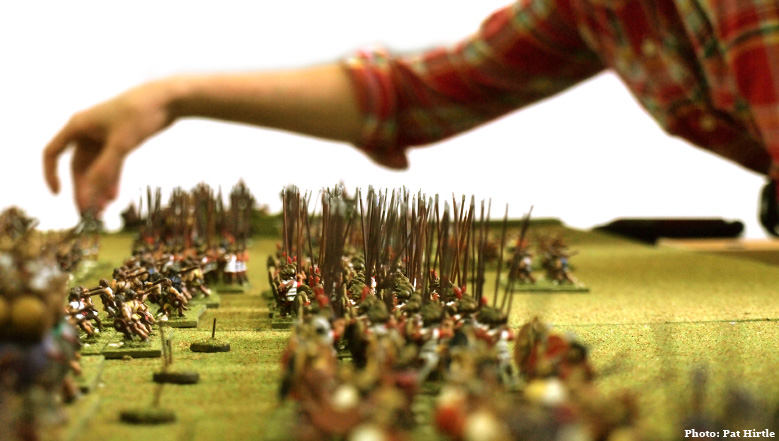When Perseus succeeded Philip V as king of Macedon in 179 BC, Macedon was already partially incorporated into the Roman sphere as a subordinate ally kingdom, and had been since Philip's defeat at Cynoscephalae in 197 BC. Macedon had been largely left to run its own affairs, but over time, resentment at having to toe the Roman line and Roman suspicions about Macedonian policy combined to raise tensions. Convinced at last that Perseus was a boil needing lancing, Rome acted, and in 171 an army was raised and sent to confront the king.
Fast forwarding to three years later, Rome still had little to show for its efforts. Against a background of mounting frustration with the conduct of the war, the republic turned to Aemilius Paullus, a 60-year-old veteran who had served successfully in Spain and Liguria and been consul before in 182, to finish the affair.
In June of the year 168, Paullus and his army came upon Perseus deployed in a strong position behind a stream near the town of Pydna. Unwilling to attack prematurely, Paullus prepared to wait Perseus out. His troops however appeared to have other ideas, and a local clash between rival water-gathering parties became general.
We pick up the action in turn one. With both armies surprised by the onset of battle, only four units can be brought on table per turn. Each side starts the contest with a unit of cavalry and three units of light infantry deployed.
 |
| Initial deployment |
For Paullus, Scipio Nasica commands the cavalry, thwarting the disruptive efforts of the Macedonian horse with exemplary personal leadership.
His initial attacks unsuccessful, Perseus brings on four more units - the maximum allowed - these being his guard phalangites, a unit of Gauls, and a unit of Thracians.
Paullus is likewise unsuccessful in his attack, but he orders four units of veteran legionaries forward to support the light infantry.
The next round of attacks are more effective, forcing both sides to rush in additional troops. Perseus, suffering from difficulties with his signalling, can only bring on three units of phalangites; Paullus brings on four more units of legionaries, two of which are veteran.
 |
| Perseus reinforces his left; Paullus matches this while also throwing troops into the centre. |
 |
| The legionaries come up. |
The commanders are faced with a stark choice: do they prosecute their attacks to the full extent of their ability, or do they prioritise bringing up reinforcements? Both choose the latter.
 |
| More troops are thrown into the fray |
 |
| The clash becomes general. |
With both sides fully deployed, the battle takes shape. Both sides fight in earnest on the Roman right / Macedonian left and in the centre. On the other wing the fighting is less intense: the cavalry skirmishing prevents the heavy infantry from becoming involved.
 |
| The fighting rages on. |
By turn seven, the heavy infantry of both sides are now wholly committed. The phalanx proves irresistable in the centre, but on both wings the strength of the Roman challenge is obvious.
 |
| View from the Roman right around turn 8. |
With the sun setting it is clear that time is running out. Both sides still stand their ground.
 |
| The armies as darkness falls. |
The battle ends with the issue undecided. Given the disparity in the forces, Perseus has done remarkably well to hold the Romans off. The day is his.
The battle proved to be very interesting, and Lost Battles yet again showed itself to be a ruleset ideally suited to the solitaire gamer who wants to revisit historical clashes.

